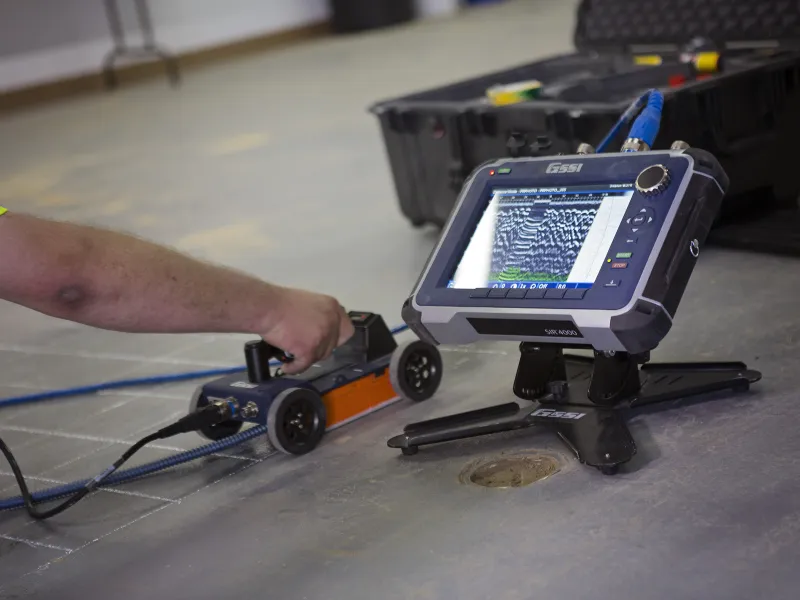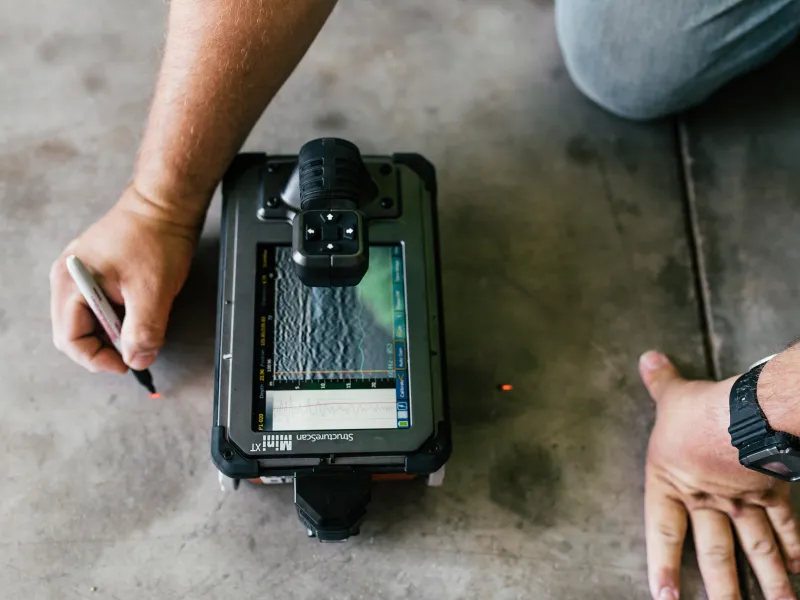Comprehensive Guide to Concrete Scanning Technologies
Comprehensive Guide to Concrete Scanning Technologies
Blog Article
Past the Surface Area: Leveraging Advanced Concrete Scanning Techniques for Unmatched Precision and Insight
Advanced concrete scanning strategies have emerged as essential tools in this quest, providing a peek beneath the surface area to reveal a world of critical insights. By taking advantage of cutting-edge innovations, professionals can discover abnormalities, evaluate the condition of concrete frameworks, and make informed decisions that form the training course of jobs.
Relevance of Advanced Concrete Scanning
The relevance of using sophisticated concrete scanning strategies exists in the unrivaled precision they use for identifying sub-surface anomalies and ensuring structural integrity. By employing advanced innovations such as ground-penetrating radar (GPR), electro-magnetic induction, and progressed finder imaging, building specialists can dive under the surface area of concrete frameworks with a degree of precision that much goes beyond traditional evaluation techniques. Concrete Scanning. These strategies allow the recognition of covert threats like rebar rust, gaps, channels, or post-tension cable televisions that can compromise the security and safety of a structure with time
Moreover, progressed concrete scanning offers important understandings right into the overall condition of a concrete aspect without the demand for intrusive procedures, lessening the risk of causing damage throughout the evaluation procedure. The capability to pinpoint the specific place and depth of possible problems enables targeted repairs and upkeep, eventually extending the life expectancy of the structure and optimizing its efficiency. Essentially, the value of sophisticated concrete scanning can not be overemphasized in the world of building and construction and facilities upkeep, where accuracy and integrity are critical.
Kinds of Cutting-Edge Technologies

Abnormalities and Problem Discovery

In enhancement to GPR, concrete scanning strategies like thermography and impact-echo screening are also efficient in spotting defects and anomalies. Thermography uses infrared technology to determine variants in surface temperature, suggesting potential locations of concern such as delamination or wetness ingress. On the various other hand, impact-echo testing entails evaluating acoustic actions to spot spaces, splits, and other defects within the concrete. By leveraging these sophisticated methods, experts can proactively address architectural problems, making certain the longevity and safety of concrete structures.
Assessing Concrete Problem
Exactly how can engineers properly examine the condition of concrete frameworks to ensure their long life and security? Assessing the concrete problem is a from this source critical element of keeping facilities integrity. Different advanced concrete scanning strategies are employed for this objective. Ground-penetrating radar (GPR) is typically used to analyze the interior framework of concrete, finding voids, fractures, and other abnormalities that might jeopardize its strength. In addition, impact-echo testing can provide understandings right into the thickness and honesty of concrete aspects. Ultrasonic pulse velocity screening is an additional beneficial technique for assessing concrete quality by gauging the speed of acoustic waves with the material.
Additionally, aesthetic inspection stays an essential component of concrete problem analysis. Designers aesthetically examine the surface for signs of degeneration, such as spalling, fracturing, or staining. Incorporating non-destructive screening approaches with aesthetic inspections enables a detailed examination of concrete problem, making it possible for engineers to identify potential problems beforehand and execute prompt upkeep or repairs. By leveraging these advanced techniques, designers can make certain the long-term longevity and security of concrete structures.
Enhancing Decision-Making Processes
In the realm of framework administration, optimizing decision-making procedures is essential for ensuring the effective upkeep and durability of concrete frameworks. Improved decision-making procedures in concrete management involve utilizing advanced scanning techniques to gather detailed information on the problem of frameworks. By leveraging modern technologies such as ground-penetrating radar and 3D imaging, stakeholders can make educated choices concerning replacement, support, or repair work techniques.
These progressed scanning methods provide vital understandings right into the interior make-up of concrete, determining prospective problems such as voids, cracks, or deterioration that may not this content be visible on the surface. This level of detailed details allows for aggressive maintenance preparation, reducing the risk of structural failures and boosting the total life-span of concrete structures.
Additionally, by integrating electronic paperwork and evaluation devices into the decision-making process, stakeholders can track the development of concrete conditions in time, allowing predictive maintenance techniques and enhancing source allowance. Inevitably, the assimilation of innovative concrete scanning strategies enhances decision-making procedures by providing unrivaled precision, insight, and performance in infrastructure management.
Conclusion
To conclude, progressed concrete scanning strategies use unparalleled accuracy and insight in discovering abnormalities, problems, and evaluating the condition of concrete structures. By leveraging innovative technologies, decision-making processes can be boosted, causing more informed and reliable services for maintaining and fixing concrete facilities. These techniques play a crucial function in guaranteeing the safety and long life of concrete structures, making them an indispensable tool in the area of building and construction and engineering.
Moreover, progressed concrete scanning gives invaluable understandings right into the overall problem of a concrete element without the demand for invasive actions, reducing the threat of causing damages during the evaluation procedure - Concrete Scanning. Another cutting-edge technology is 3D X-ray scanning, which supplies detailed pictures of the inner structure of concrete, using valuable info without the demand for destructive testing. In Addition, Concrete Cover Meters are used to determine the density of concrete cover over reinforcement bars precisely. Boosted decision-making processes in concrete administration entail utilizing you can try this out sophisticated scanning strategies to gather comprehensive information on the problem of structures.In final thought, progressed concrete scanning techniques provide unparalleled accuracy and understanding in identifying anomalies, flaws, and analyzing the condition of concrete structures
Report this page